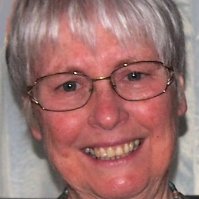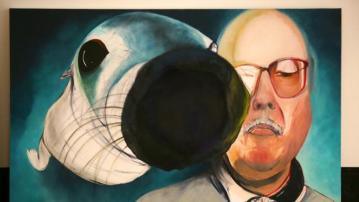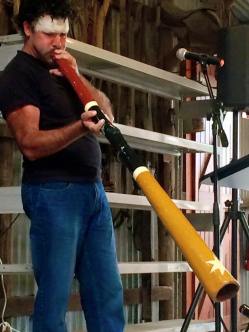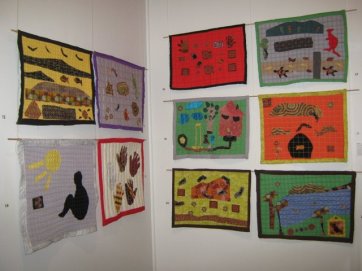 Three days after Australia Day, January 26, Becky Chatfield, right, of Wagana Aboriginal Dancers in the Blue Mountains, posted on Facebook – feeling cross . . . . People who say things like ‘Aboriginal people should think themselves lucky, they could have been invaded by way worse people.’ Oh yeah ok thanks for pointing that out. Mass murder, rape and genocide sounds totally lucky. Chuck in a bit of dehumanising behavior, some decapitated babies and a nice big bunch of stolen children and I feel like we’ve won the lotto!
Three days after Australia Day, January 26, Becky Chatfield, right, of Wagana Aboriginal Dancers in the Blue Mountains, posted on Facebook – feeling cross . . . . People who say things like ‘Aboriginal people should think themselves lucky, they could have been invaded by way worse people.’ Oh yeah ok thanks for pointing that out. Mass murder, rape and genocide sounds totally lucky. Chuck in a bit of dehumanising behavior, some decapitated babies and a nice big bunch of stolen children and I feel like we’ve won the lotto!
A friend responded, “People say these things!? I actually welled up from this post. I can’t handle the disrespect that is implied everyday to our mob.”
As reported on ABC Radio, a recent survey has found that the vast majority of people believe the relationship between indigenous and non-indigenous Australians is important. But it also found that a third of Aboriginal and Torres Strait Islander people had been racially abused in the six months before the survey.
 Discussion at the recent artists’ talks at Fairfield City Museum and Gallery was impassioned and frequently angry. The anger was driven by decades of frustration among Aboriginal artists and their supporters that Aboriginal people and their knowledge are continually belittled or totally ignored.
Discussion at the recent artists’ talks at Fairfield City Museum and Gallery was impassioned and frequently angry. The anger was driven by decades of frustration among Aboriginal artists and their supporters that Aboriginal people and their knowledge are continually belittled or totally ignored.
Co-curator Lena Nahlous introduced the talks by explaining that her original brief for the exhibition which became Talk the Change/Change the Talk had been to respond to proposed constitutional change that would include specific reference to Aboriginal and Torres Strait Islander people. Her initial local research revealed that the brief was seen by local Aboriginal people as simply a white bureaucratic imposition and of little interest. Instead, she became aware that there were extraordinary stories of resilient communities creating their own networks of mutual support and survival. Unlike the white and immigrant communities in the Fairfield area, their stories had never been recorded. If this were to change, she needed a strong, high profile Aboriginal artist to be her co-curator, who could pull in other leading indigenous artists.
 Much against his will, Blak Douglas (aka Adam Hill) finally agreed to take on the role. “I am not a trained curator,” he said, “and there is only one indigenous curator in Australia, who has the objectivity needed to see work clearly and with purpose.” Born in Blacktown, western Sydney, of an Aboriginal Australian father and white Australian mother, Blak trained in graphic arts and became a passionate advocate for social justice. In the upper photo, he listens while Lena speaks, standing below one of his preliminary works for Do or Die, a painting expressing his gamble in being an Aboriginal artist in the mainstream Australian art world. Blak describes himself as a political artist, who seeks to encourage Aboriginal youth art and culture. He is a past winner of the NSW Parliamentary Art Prize, which has brought him further recognition, but left him deeply sceptical about judges and sponsors of the prize.
Much against his will, Blak Douglas (aka Adam Hill) finally agreed to take on the role. “I am not a trained curator,” he said, “and there is only one indigenous curator in Australia, who has the objectivity needed to see work clearly and with purpose.” Born in Blacktown, western Sydney, of an Aboriginal Australian father and white Australian mother, Blak trained in graphic arts and became a passionate advocate for social justice. In the upper photo, he listens while Lena speaks, standing below one of his preliminary works for Do or Die, a painting expressing his gamble in being an Aboriginal artist in the mainstream Australian art world. Blak describes himself as a political artist, who seeks to encourage Aboriginal youth art and culture. He is a past winner of the NSW Parliamentary Art Prize, which has brought him further recognition, but left him deeply sceptical about judges and sponsors of the prize.
He sees exposure like the Parliamentary prize as an opportunity to produce a willy willy of consciousness, but says the world hasn’t changed in 45 years of his experience. Among the works in the exhibition are Karla Dickens’ old mantel clocks, above, expressing the same desperation about the lack of change. Karla is a multi award winning artist and Wiradjuri Ngurambanggu woman, who lives in the Lismore/Casino area of New South Wales, which is also a base for the Ku Klux Klan in Australia. The KKK is an extremist American hate group preaching white supremacy – often with violence. The exhibition catalogue quotes Karla as saying:
There is power in asserting objection shoulder-to-shoulder – and disapproval of the obvious injustices, pains and truths of the unheard. It is an action that holds the hope that, once the story is told, a change in the unacceptable will be born and grow.
 Another highly awarded artist exhibiting in the show, Leanne Tobin, a Darug descendant of the Boorooberongal and Wumali clans of the Greater Sydney region, agreed wholeheartedly with Blak’s sentiments. She says Burbagana (To Rise), her painting above, is rendered in Renaissance style using ochres to portray the clearing of fog around Darug ancestors. Leanne is a trained teacher and artist. In schools she teaches about creeks, plants and animals, giving children an entry into Aboriginal knowledge, respect for the land and for the old people. She assists Aboriginal women prisoners to research and recover their own identities. Leanne is endlessly frustrated by the constant dilemmas and conflicts engendered by government misunderstandings and creations. “Eora”, she says, simply means “from here” and is not the name of a clan or tribe. Land councils are white bureaucratic constructions that ignore the role of traditional custodians of the land.
Another highly awarded artist exhibiting in the show, Leanne Tobin, a Darug descendant of the Boorooberongal and Wumali clans of the Greater Sydney region, agreed wholeheartedly with Blak’s sentiments. She says Burbagana (To Rise), her painting above, is rendered in Renaissance style using ochres to portray the clearing of fog around Darug ancestors. Leanne is a trained teacher and artist. In schools she teaches about creeks, plants and animals, giving children an entry into Aboriginal knowledge, respect for the land and for the old people. She assists Aboriginal women prisoners to research and recover their own identities. Leanne is endlessly frustrated by the constant dilemmas and conflicts engendered by government misunderstandings and creations. “Eora”, she says, simply means “from here” and is not the name of a clan or tribe. Land councils are white bureaucratic constructions that ignore the role of traditional custodians of the land.
 Elaine Pelot Syron is a non indigenous artist, right, whose documentary photos are an important feature of Talk the Change/Change the Talk. She came to her role as photographer almost by accident. She arrived in Australia from the USA in 1971, already influenced by the Civil Rights movement and Dr Martin Luther King. She was shocked to find the endlessly negative reporting by the media about Aboriginal people and began taking photographs of her own to correct the record. She accumulated a precious archive of decades of photos, which include some of the leading names in Aboriginal activism – Joe Croft, Mum Shirl, Burnum-Burnum, Dr Roberta Sykes, Isabel Coe, NAISDA and Bangarra.
Elaine Pelot Syron is a non indigenous artist, right, whose documentary photos are an important feature of Talk the Change/Change the Talk. She came to her role as photographer almost by accident. She arrived in Australia from the USA in 1971, already influenced by the Civil Rights movement and Dr Martin Luther King. She was shocked to find the endlessly negative reporting by the media about Aboriginal people and began taking photographs of her own to correct the record. She accumulated a precious archive of decades of photos, which include some of the leading names in Aboriginal activism – Joe Croft, Mum Shirl, Burnum-Burnum, Dr Roberta Sykes, Isabel Coe, NAISDA and Bangarra.
Aboriginal and Torres Strait Islander Social Justice Commissioner Mick Gooda gave a cautious welcome to Prime MInister Turnbull’s speech in parliament yesterday, which saw him repeatedly quote the message he had heard from Indigenous groups: “Do things with us, not to us”.
“We have heard these words before,” Mr Gooda said. “We take them with good heart but there’s got to be a carrying-out of that new relationship so I think we’re entitled to be a little bit cynical about it until it starts happening.”
Cape York leader Noel Pearson says, “We’d like to see the Prime Minister commit to treating Aboriginal and Torres Strait Islanders like he promised he’d treat Australians more generally – as people with intelligence who can handle complex problems and issues.”










